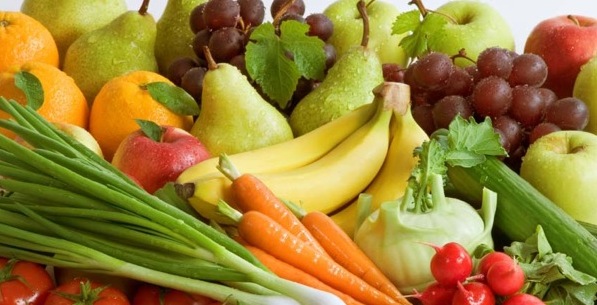Organics Continue Double Digit Growth
While organic products in the marketplace continue to experience double digit growth, they still only represent a small percentage of overall business, meaning there is much room for more growth.
That was the take away message delivered by a trio of speakers at a workshop sessions during the United Fresh Produce Association convention in Chicago, June 10-12.
Laura Batcha, executive director and CEO of the Organic Trade Association, led the discussion and kicked off the session with some numbers about the growth of the category. In 2002, when the USDA came out with quantifiable organic standards and the USDA organic seal, the sector had gross sales in the United States of about $3 billion. Those standards, Batcha said, “created a platform for huge expansion.”
By 2013, the market had grown 10-fold and now there are sales of $35 billion, with fruits and vegetables leading the category by representing 36 percent of those sales. It is not only the largest sector within that category but it’s the fastest growing, according to the OTA executive.
Elaborating on the impact in the fresh produce industry were panelists Todd Linsky, vice president of organic sales for Grimmway Farms/Cal-Organic Farms, and Michael Hollister, senior vice president of sales and marketing for Driscoll Strawberry Associates Inc. Those two were respectively representing the top selling fruit and vegetable in the category: carrots and berries. Both confirmed that organic sales continue to increase.
Linsky said carrots generate a high velocity of organic sales year round. “They are doing very well,” he added.
Hollister said the great thing about shoppers who buy organic berries and other organic items, is they are “super heavy consumers” buying 25 percent more fruits and vegetables per store visit than their non-organic buying counterparts.
While there are heavy buyers of organic produce and other organic items, Batcha said penetration of organic products runs deep. An annual survey of 1,200 households that OTA has been conducting for the past seven years, reveals 80 percent say they have purchased at least one organic item in the past year. “The vast, vast majority (of households) are aware of organics and participate in some way.”
Batcha said what separates an organic shopper from a conventional one is that the organic shopper is much more likely to associate making a healthy choice with her food buying decisions.
Linsky said this emotional connection that most organic food shoppers associate with the purchase of these products is why he believes the potential for growth continues to be sky high. He said the value of that emotional connection in their food buying choices “is huge.”
Hollister agreed stating that many organic shoppers see a relationship between their food shopping behavior and their lifestyle. It is the urban/cosmopolitan resident that is more likely to be an organic shopper and is currently driving increased sales in the category.
Underscoring that connection, Batcha said the typical organic shopper is much more likely to diversify their buying habits, shopping at three different stores or more a week, presumably searching for the exact items they want. They are a younger buyer and their average spend in a store is $125 per visit compared to $110 for a non-organic shopper.
But she said the vast majority of organic fruit and vegetable shoppers will buy conventional product if organic is not available. The OTA research shows that 91 percent still make a purchase if an organic item that they are looking for is not available, with a majority of those buying the conventional option but almost 40 percent picking a different organic option.
Linsky believes the shopping at many stores and changing purchases at the grocery store because of lack of availability of the organic option points to the huge potential that remains for the category and retailers. He said no one appears to be offering the organic consumer exactly what they want at one place. Retailers should embrace that heavy produce-shopping consumers and “get her back in your store,” said the carrot salesman.
Hollister reiterated that the organic shopper is a very valuable customer. Natural food stores cater to those customers and if traditional supermarkets want more of that businesses they should find a way to communicate better with that consumer, he said.
Both Hollister and Linsky pointed out that keeping up with the demand for organic fruits and vegetables is one of their biggest challenges from the supply side. The Driscoll executive said they are seeing 20 percent year over year growth in their organic sales but getting the land to increase their production in that amount is difficult. For a grower, it takes three years to transition conventional land to organic production. “It’s a huge investment; it doesn’t happen overnight.”
Linsky concurred. “Ground is a huge challenge,” he said. “And it will continue to be a challenge.”
A question from the audience about Walmart’s contention that the nation’s largest retailer plans to bring organics into the marketplace at a cheaper price brought a warning from Hollister. He indicated that type of talk creates an expectation that is hard to meet. He said growing organic produce is an expensive proposition and it can’t always be delivered at that cheap price that Walmart is noted for. But he added that they love the attention the announcement brings to the category “and we’d love to have that conversation with them.”
Source: The Produce News (Tim Linden)


Leave a Reply